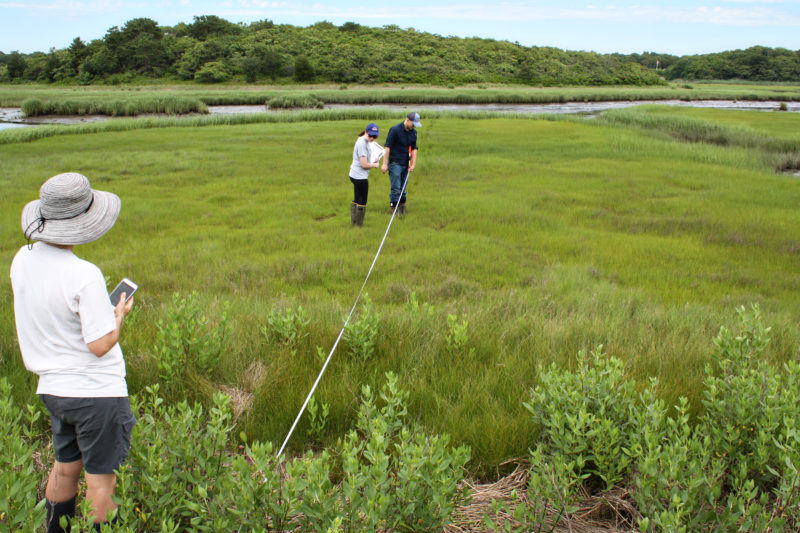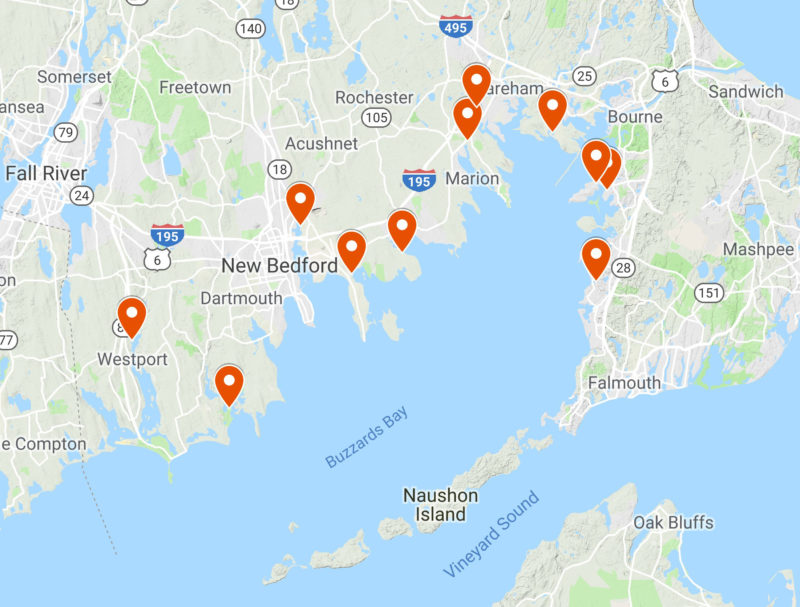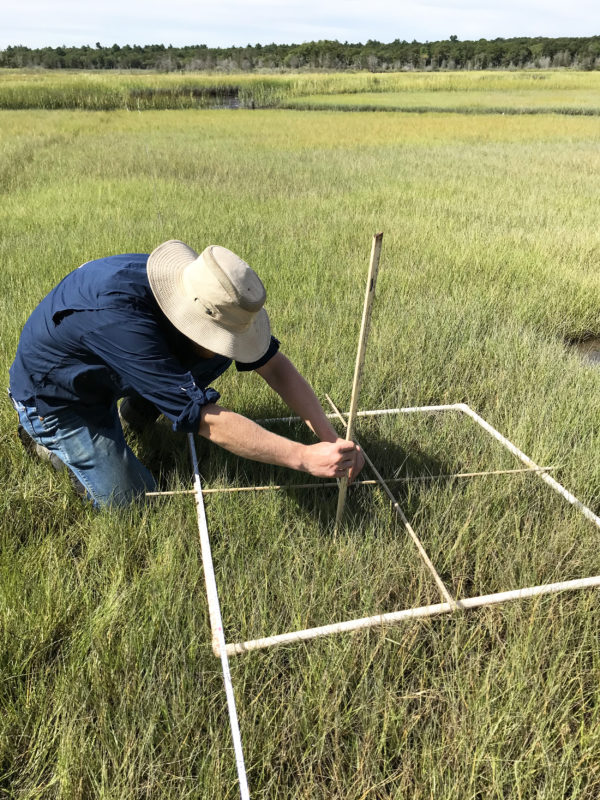Coalition commits to monitoring long-term salt marsh health
Fish nursery, bird habitat, pollution filter, coastal shield: salt marshes play many roles that protect the health of Buzzards Bay and its seaside communities – both human and wildlife. But in many places around the Bay, our marshes are struggling to fill this vital role. Many Bay towns are watching their salt marshes degrade, or disappear altogether.

Salt marsh interns Ryan Kappel and Heather Gaughan lay a transect, along which researchers will monitor marsh plants and animals year after year.
Understanding which marshes are declining, and how fast, is a critical first step in trying to figure out how to stop salt marsh loss. That’s why the Coalition is partnering with the Buzzards Bay National Estuary Program (NEP) to initiate long-term monitoring of a dozen marsh sites located around Buzzards Bay.
Most study locations are on town and Coalition properties, to make sure researchers have ongoing access for tracking long-term changes in the marshes. The Coalition and NEP designed this monitoring plan with help from experts around New England, including from the Marine Biological Laboratory, the Woods Hole Research Center, and the Narragansett Bay and Waquoit Bay National Estuary Research Reserves.
Grant funding from the U.S. Environmental Protection Agency and NEP is supporting the development of the program and the first year of monitoring. The NEP is also funding co-op students from the Massachusetts Maritime Academy to assist with the project.
Beginning in June, and continuing through September, intern Ryan Kappel and Mass Maritime Academy co-op student Heather Gaughan have been working with the Coalition and the NEP to gather data on twelve Bay salt marsh sites in nine towns: Westport, Dartmouth, Fairhaven, Acushnet, Mattapoisett, Marion, Wareham, Bourne, and Falmouth. In each marsh, they’re gathering information about the type of vegetation growing, the height and density of important plant species, and the types of shellfish and crabs present.

This research project will cover salt marshes across a range of health throughout the Buzzards Bay watershed.
The team is also measuring elevations within each marsh, an important measure of salt marsh health. Marshes have historically adapted to sea level rise by migrating inland, and by trapping and building material to increase their elevation.
In turn, plants within salt marshes have developed varying abilities to survive salt water exposure as tides flush in and out of the marsh. Plants growing along the marsh edge are capable of surviving when covered with salt water for long periods, while plants that grow in higher areas are adapted to only limited exposure to seawater.
The ability of these plants to survive and thrive is tied to the elevation of the marsh relative to sea level. But sea level rise has accelerated in recent years due to climate change, making it harder for marshes to keep up.
Year after year, Coalition staff will return to the same marshes to check if their elevation has changed, and to gather the same information about the plants and creatures living there.

Intern Ryan Kappel measuring the height of salt marsh cordgrass at a site in Mattapoisett.
“The goal is to understand how each marsh is changing and what might be causing those changes,” says Rachel Jakuba, the Coalition’s science director. “Because each marsh is unique, we also want to compare them to each other. Different levels of tidal height, nitrogen inputs, wave exposure, and grazing by crabs at each marsh will affect that marsh’s health.”
The health of the marshes studied in this project vary. In degraded sites, marsh habitat has now become mud flats. In other marshes, old drainage ditches dug during the 1930s have widened rapidly in recent years, and some are crumbling around the edges. The healthiest looking marshes, in contrast, have dense vegetation right to the marsh edge.
Studying the different marshes over many years will help explain what makes some marshes hardier than others, and help predict how they might fare as global sea level continues to rise.
“In the first year of the study we need to document baseline conditions, especially the precise elevations of marsh boundaries and salt marsh plant species,” said Joe Costa, Director of the Buzzards Bay NEP. He added: “This data will help us track future changes in marsh habitat, and allow us to make predictions of marsh loss in the face of rising sea level.”
Buzzards Bay needs its salt marshes to stay healthy and thrive. By keeping a finger on the pulse of these vital Bay ecosystems, the Coalition and its partners hope to help preserve salt marshes, and to keep everything they give us — from healthy fish and shellfish, to protection against climate change — in return.